Teaching the alphabet can be difficult for a variety of reasons. One reason is that it requires children to develop a new set of cognitive skills, such as recognizing and matching symbols to sounds. Here I will outline the best way on how to teach the alphabet armed with resources, printables and games and many more downloads.
Check out more games and ideas to work on alphabet matching skills with these printables!
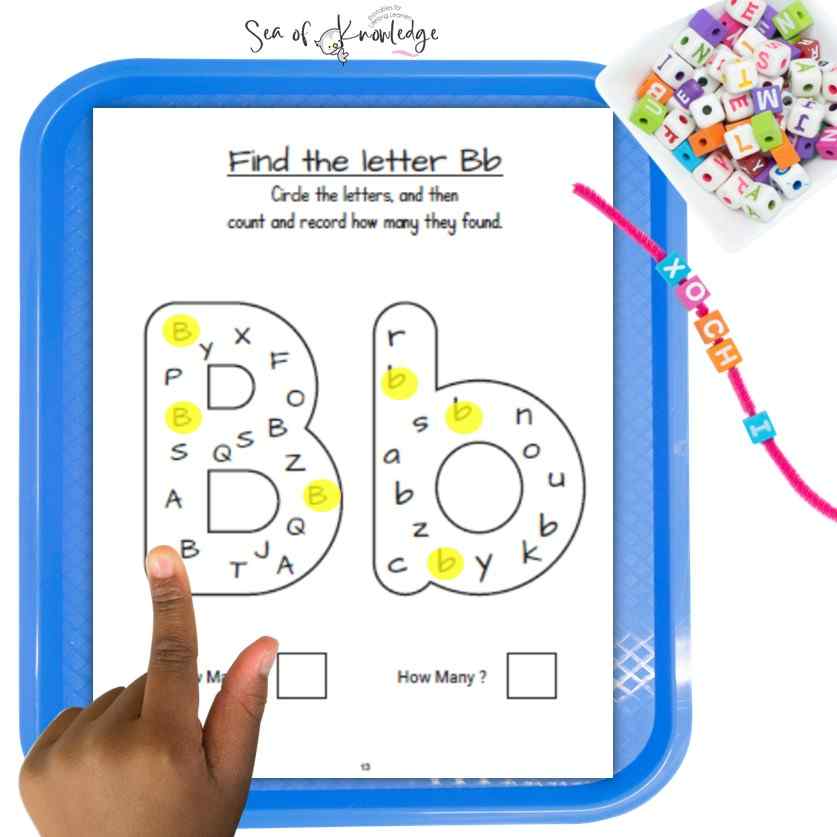
At the end of this post, I’ve included an alphabet starter bundle you will LOVE. It includes everything from letter posters, fine motor activities, games and worksheets all in one and it is free to get you started!
This post will outlined great ideas and a great way to incorporate teaching the alphabet in routines and daily activities
Additionally, some children may struggle with fine motor skills, making it difficult for them to write the letters. Language barriers can also make it difficult for non-native speakers to understand and learn the alphabet.
Furthermore, Some children may have learning difficulties such as dyslexia, which can make it harder for them to learn the alphabet.
Fun ways to teach letters of the alphabet
Teaching lowercase letters and letter sounds can be difficult. Uppercase letters are easier to grasp for children.
They typically can draw the lines much more easily. I’ve outlined a post on whether you should start with uppercase or lowercase letters.
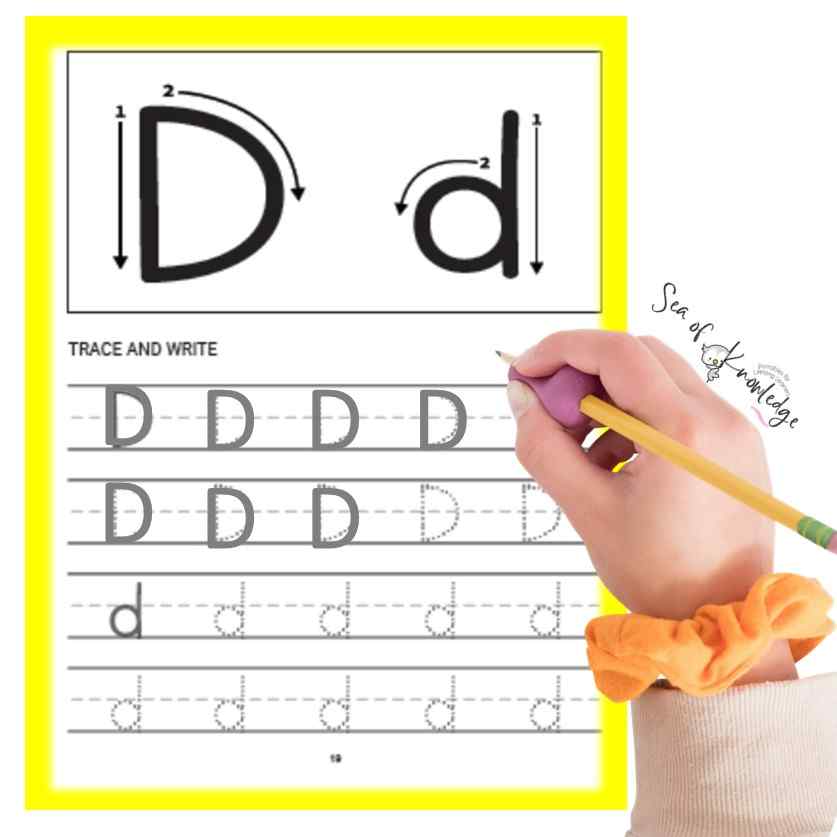
Letter names are also important, but not as important as letter sounds.
So if you ever wanted to start somewhere, start with letter sounds. I will also outline how to teach lower case letters so you are not stumped on that.
Fun ways to teach the alphabet
There are several fun ways to teach the alphabet to children:
- Using songs or rhymes: Use the ABC song to teach it! Teaching the alphabet through songs or rhymes can make it more engaging and memorable for children. Kids respond so well to the alphabet song.
- Alphabet scavenger hunt: Hide pictures or objects around the room that begin with each letter of the alphabet, and have children find them.
- Alphabet puzzles: Provide children with puzzles that have the letters of the alphabet on them, and have them match the letters to form words.
- Alphabet art: Have children create art using the letters of the alphabet, such as making letters out of playdough or using them to create a collage.
- Alphabet games: Play games such as “Alphabet Bingo” or “Alphabet Memory” to make learning the alphabet more interactive and fun.
- Using real-life objects: Use objects around the house or in the classroom that begin with each letter of the alphabet.
- Using technology: There are many interactive alphabet learning apps, videos and games available which can make learning fun and engaging for children.
- Use alphabet books: They don’t need to be directly outlining the alphabet, they can be working or specifying letter sounds.
Use letter of the week printables
Of course, there are always different ways to tackle teaching the alphabet. I incorporate alphabetical order activities, magnetic letters and many more manipulatives that kids love to interact with.
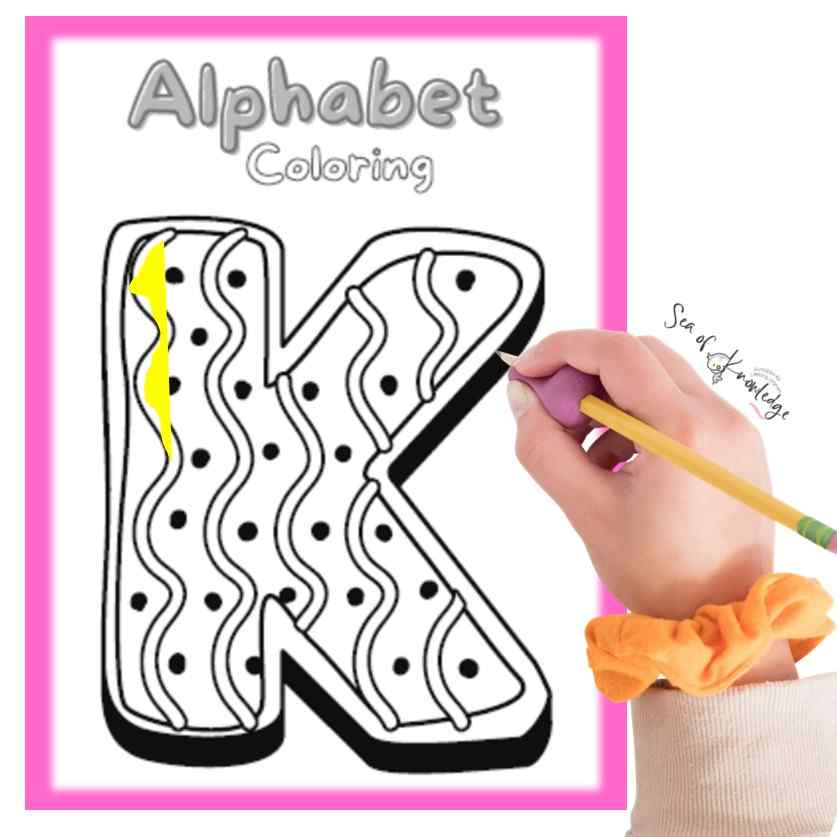
These are fun and playful ways to work on alphabet letters for young children.
When to teach the alphabet
You would most likely recognise when your child is ready to learn the alphabet. And the most important thing to remember is to stay in tune with their development needs.
The appropriate age to teach the alphabet can vary depending on the child and their individual developmental milestones.
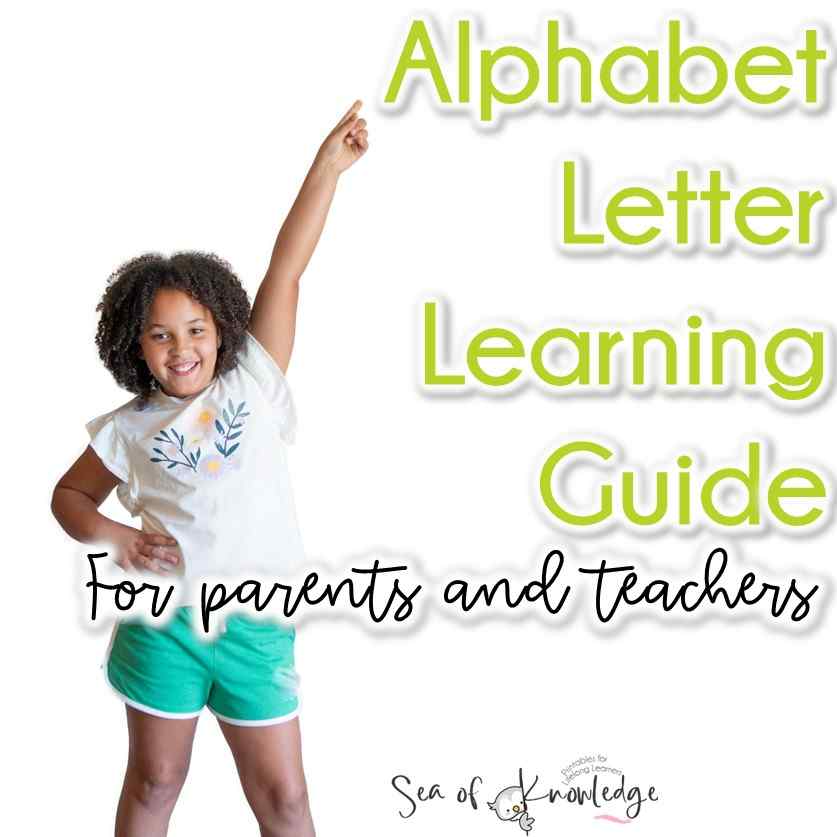
When should a child recognise the letters of the alphabet? An a to z guide!
However, in general, it is recommended to begin introducing the alphabet to children between the ages of 2 and 3. At this age, children typically have the cognitive and language skills necessary to begin learning letters and their sounds.
It’s important to note that while children can start learning the alphabet at 2-3 years, it’s not expected that they would have mastered it.
Learning the alphabet is a process that takes time and exposure and children may not be able to recognize or write all letters until they are 5 or 6 years old.
Also, it’s important to keep in mind that children develop at different rates, so some children may be ready to start learning the alphabet earlier or later than others.
It’s important to follow the child’s lead and to adjust the teaching methods and pace based on their needs and understanding.
What order to teach the alphabet
There are different approaches to teaching the alphabet, but one common method is to teach the letters in alphabetical order. This method is simple and logical, as it follows the order of the letters in the alphabet.
The first step is to recognise the important letters in the child’s life, like their name. Capital letters may be easier to teach.
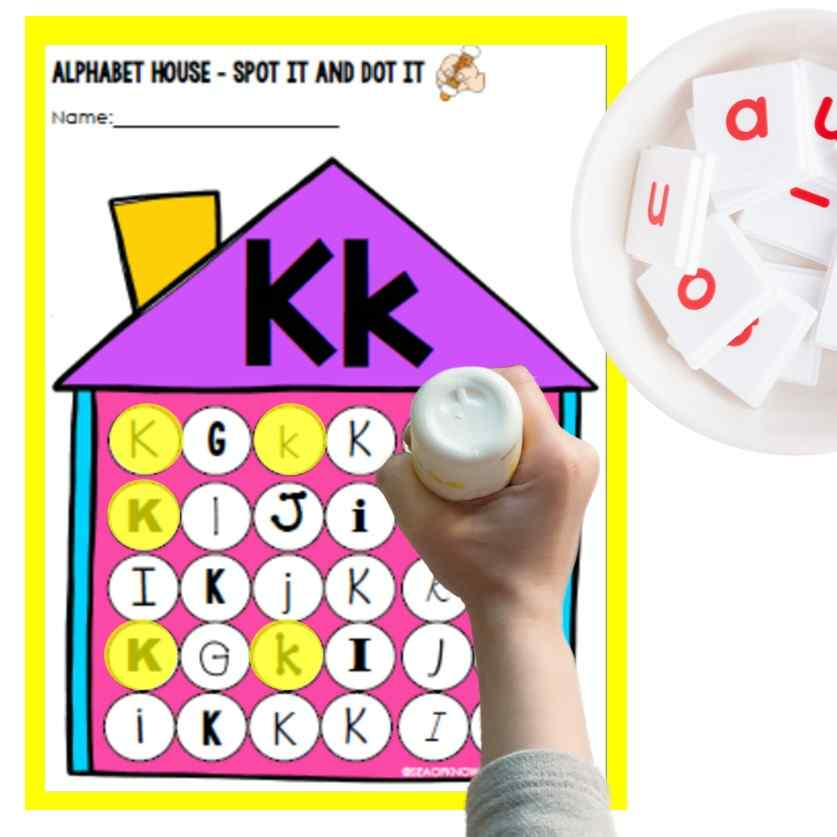
Some other methods include teaching letters by frequency of use in the language, teaching vowels first, or teaching the letters in a way that is related to the child’s environment or interests.
Regardless of the approach chosen, it’s important to keep in mind that children learn best when the letters are presented in a meaningful context.
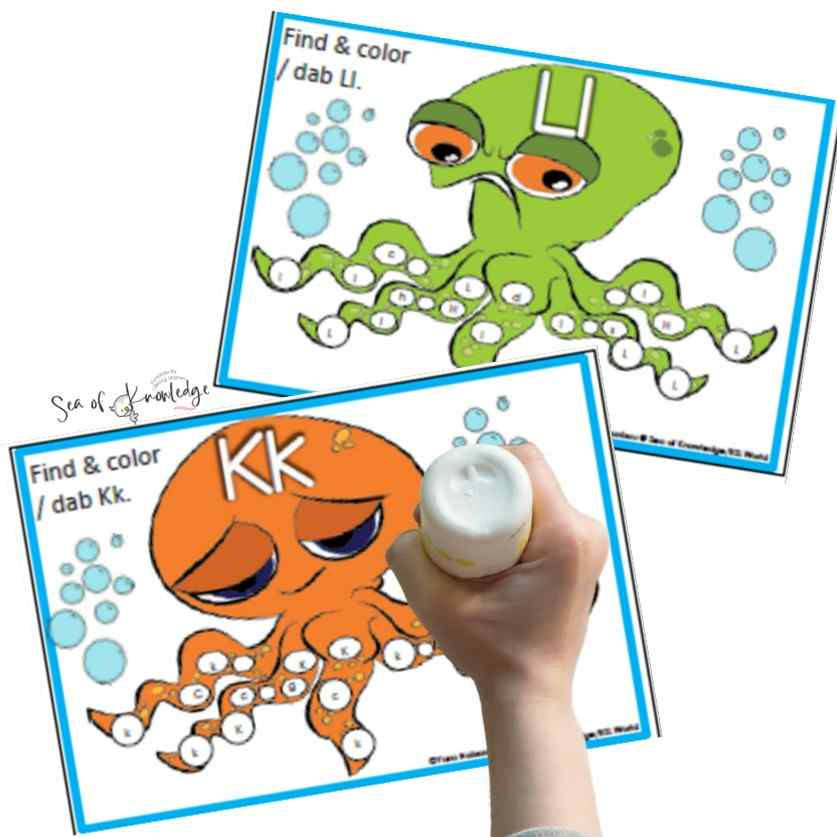
For example, you can use words that the child is already familiar with, or you can use objects or pictures to help them connect the letter to a real-world object.
I like to use puzzles to teach the alphabet, these cut and paste picture puzzles are so easy for kids to understand and make, they are one of the best alphabet activities my kids love:
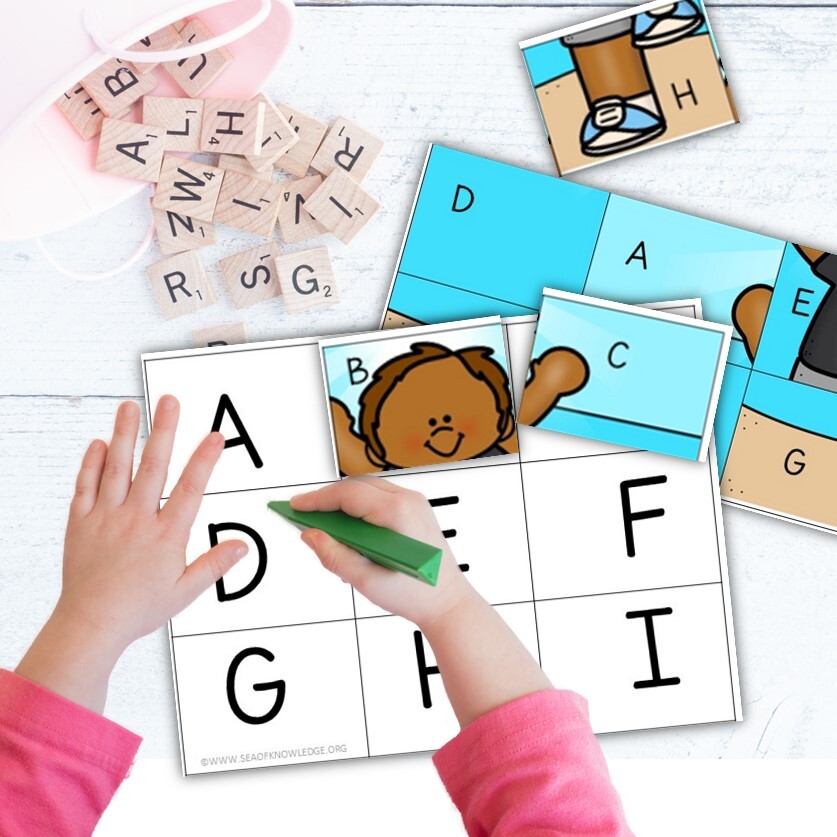
It’s also important to keep in mind that learning the alphabet is not a one-time event but a ongoing process for young learners.
It’s important to keep reviewing and reinforcing the letters and their sounds throughout the years.
Letters of their name
Teaching children the letters of their name can be an engaging and personalized way to help them learn the alphabet.
Here are some tips for teaching children the letters of their name:
- Start by writing their name in big, clear letters and pointing to each letter as you say it. Encourage them to trace the letters with their fingers and say the name with you.
- Use manipulatives, such as blocks or letter magnets, to build the letters of their name. This will help children to see the letters in a physical form.
- Use flashcards with the letters of their name written on them. Show them the flashcard, say the letter and name, and encourage them to point to the correct letter as you say it.
- Play games like “Name Scavenger Hunt” where you hide pictures or objects that begin with each letter of their name and have them find them.
- Use technology, such as interactive alphabet apps or videos, to make learning the letters of their name more fun and engaging.
- Let them see their name around them, by writing it on a notebook, making a name tag, or even on a personalized book
- Make it a daily routine, try to incorporate the letters of their name in daily activities like reading, writing, or even singing.
It’s important to be patient and to make the learning process fun and engaging for the child. Remember to celebrate their progress and accomplishments along the way.
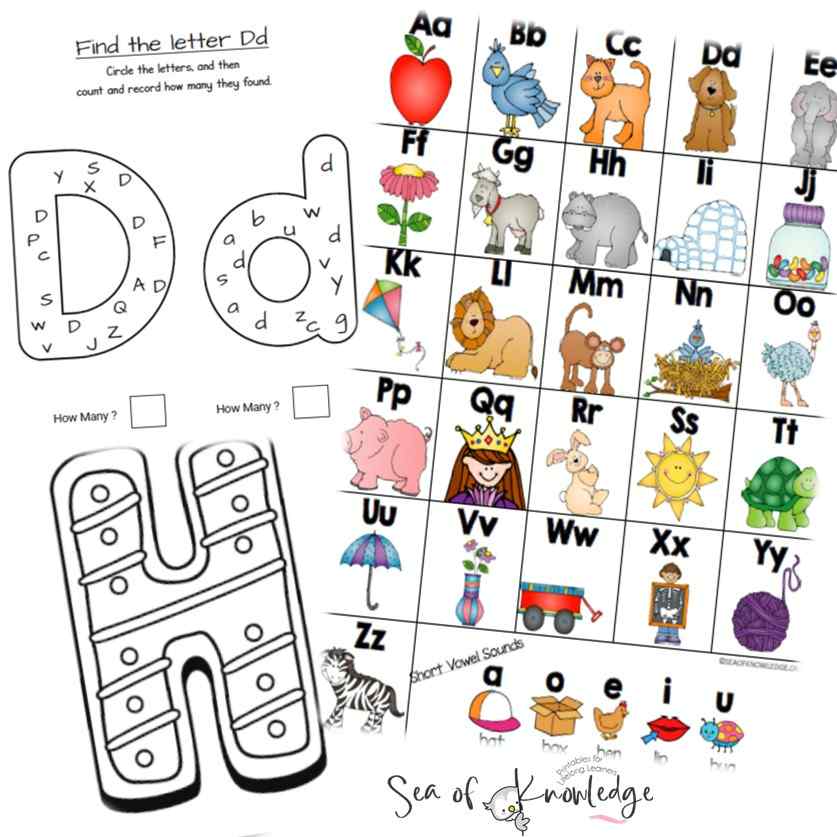
That way they can learn the names of the letters in a fun and engaging way.
Using fun games and incorporating the child’s name is one perfect way to get letter learning off to a great start!
Letter recognition activities
If you’re stuck on ways to incorporate letter learning ideas, start with sensory bins!
These are perfect ways to get kids wanting to explore the bin AND learn their letters and the letter shape. Start simple, with a sensory tub, a filler like large pasta and magnetic letters. Easy!
Why are sensory bins beneficial to kids?
Sensory bins are a popular learning tool for children because they provide a multi-sensory experience that appeals to children’s natural curiosity and desire to explore.
- Touch: Sensory bins provide children with a variety of textures to explore, such as smooth, rough, soft, or bumpy, which can be very appealing to young children.
- Sight: Sensory bins are often filled with bright, colorful, and interesting items that capture children’s attention and encourage them to explore.
- Smell: Some sensory bins include items that have a distinct smell, such as scented rice or herbs, which can also be appealing to children.
- Sound: Some sensory bins include items that make noise, such as beads or shells, which can be a lot of fun for children to explore and play with.
- Taste: Some sensory bins include edible items, such as pasta or cereal, which can be safe for children to taste, and can be a great way to involve taste in the play.
- Exploration: Sensory bins allow children to explore, discover and experiment with different materials and objects. This type of open-ended play allows children to learn and discover at their own pace.
- Fine motor skills: Sensory bins often require children to use their hands to explore and play, which can help them to develop fine motor skills such as grasping, picking up small objects and pouring.
Sensory bins are a fun and interactive way for children to learn and explore their environment, They also encourage children’s natural curiosity and creativity, making it a great way to engage children in learning.
Letter formation ideas
If your students are ready for letter formation, you could start with upper case letters and these printable cards below are a great tool to start with letter learning and letter writing.
You could start with individual letters and hands-on activities and move your way up to worksheets and printables.
Below I have linked so many free printables to get you started!
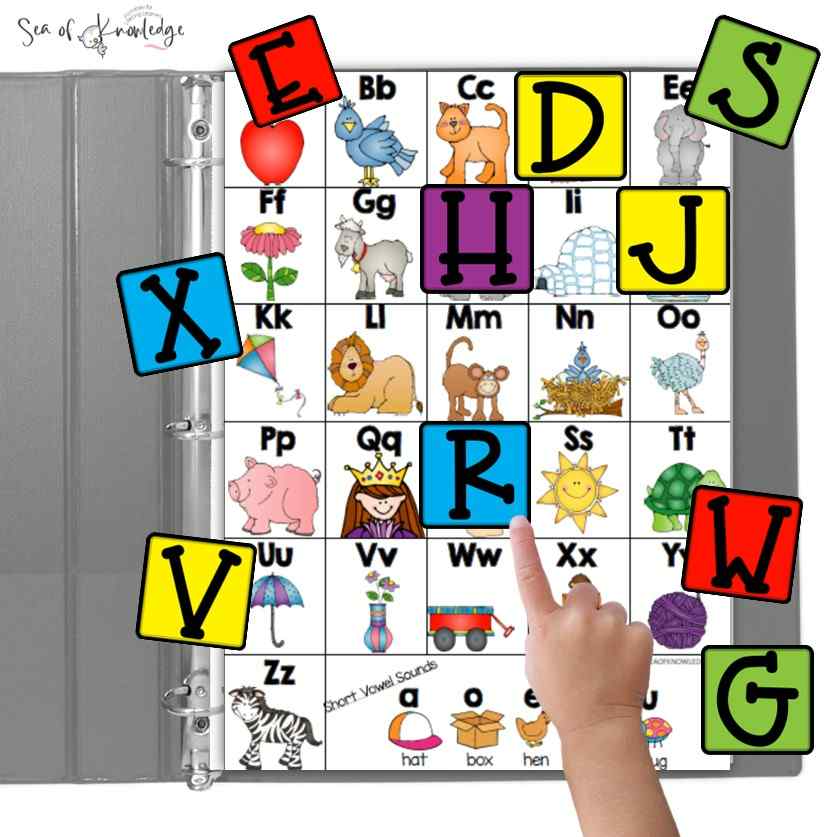
This printable alphabet chart is perfect to be hung on the classroom wall, in the playroom at preschool and more!
Fun and easy alphabet games for every preschool and homeschool!
Don’t forget to check out the ways to teach the alphabet to struggling students.
The good news is, no matter where you begin, starting with these simple ideas will get you at least recognising the best ways to teach your kids or students and work from there.
Alphabet crafts
Crafts are fun for so many children. Incorporating easy alphabet crafts into your daily routine at school or at home will make for a great way to learn letter sounds and letter shapes.
Build a strong foundation in letter learning with these fun crafts below.
Hands-on play dough letter mats
I’ve also included some fun playdough letter mats in my planning which have proved to be the best way to get kids working on formation before actually writing the letter.
These mats, however include the formation letters (if need be) and the playdough section along with the beginning sound pictures.
This are easy ways to help kids connect the letter with its sound and formation.
You can even get started on a specific letter like a letter in their name and not necessarily in a letter sequence.
How to Teach the Alphabet Fun Games and Printables
In conclusion, teaching the alphabet is an important step in a child’s development and education.
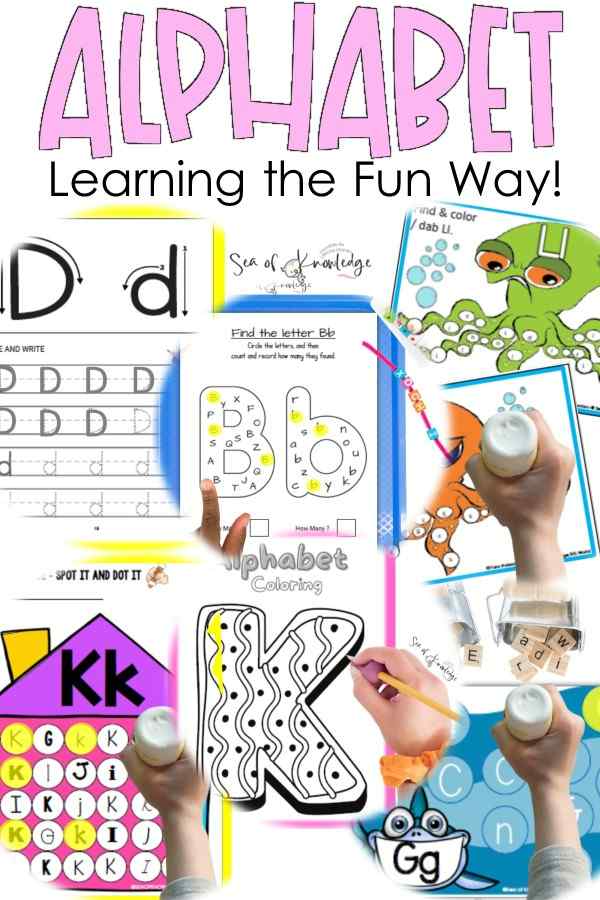
There are many different approaches to teaching the alphabet, such as teaching the letters in alphabetical order or by frequency of use in the language.
However, regardless of the approach chosen, it’s important to keep in mind that children learn best when the letters are presented in a meaningful context.
Using songs or rhymes, alphabet scavenger hunts, puzzles, art projects, games, real-life objects, and technology can make learning the alphabet more fun and engaging for children.
Additionally, teaching the letters of a child’s name can be an engaging and personalized way to help them learn the alphabet.
It’s important to be patient and to make the learning process fun and engaging for the child. Remember to celebrate their progress and accomplishments along the way.
Don’t forget to grab this fun printable pack with over 250+ pages of alphabet fun!

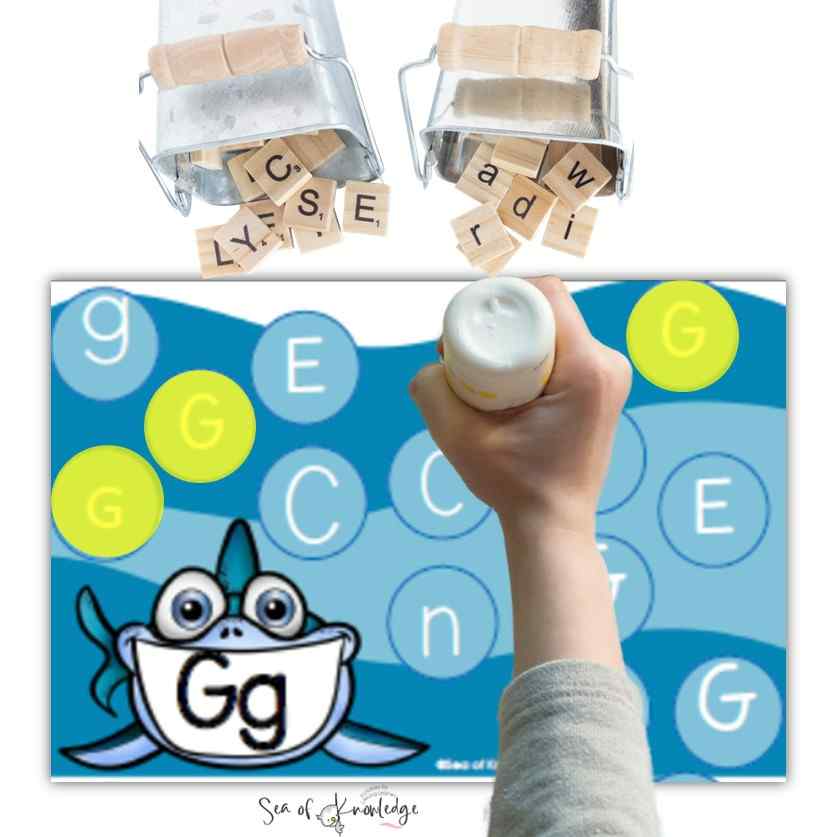
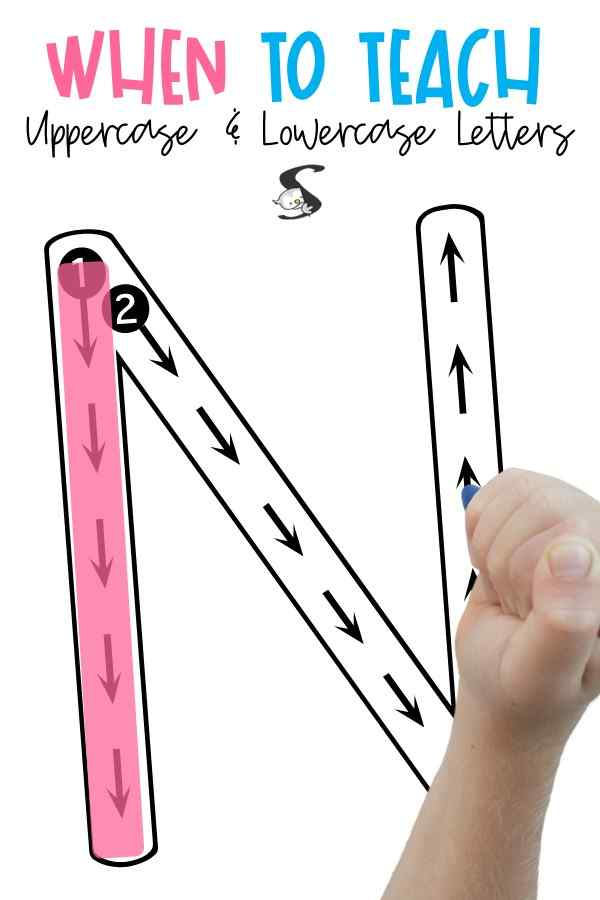
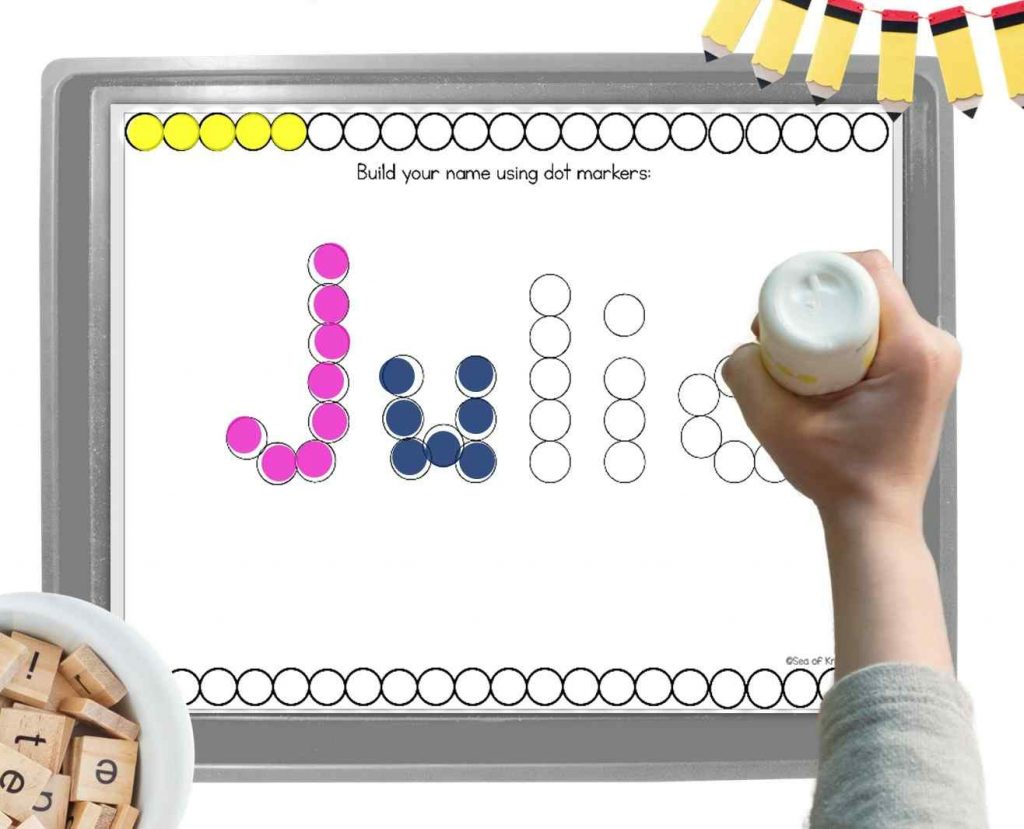
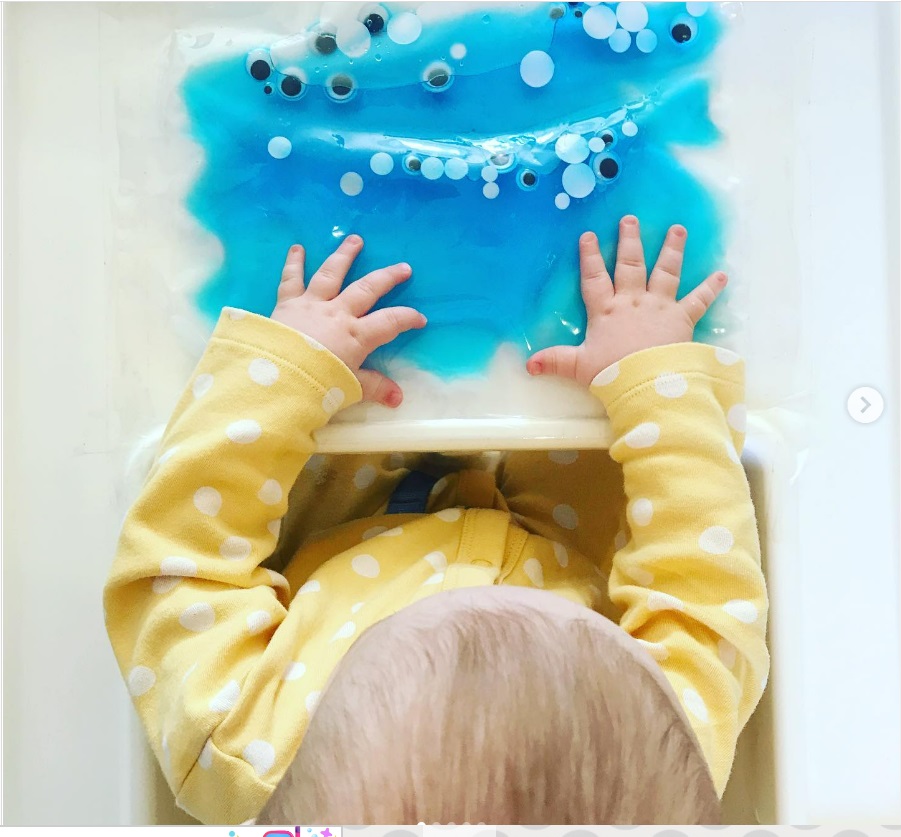
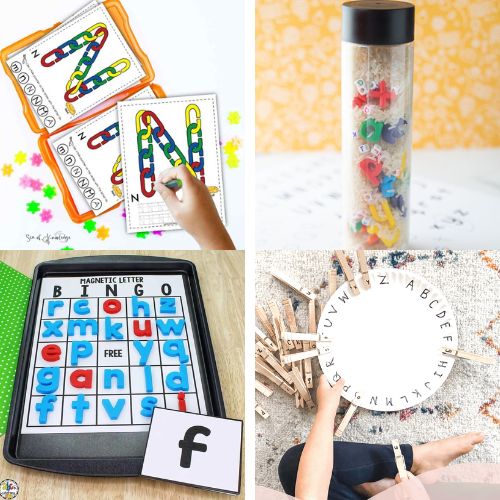
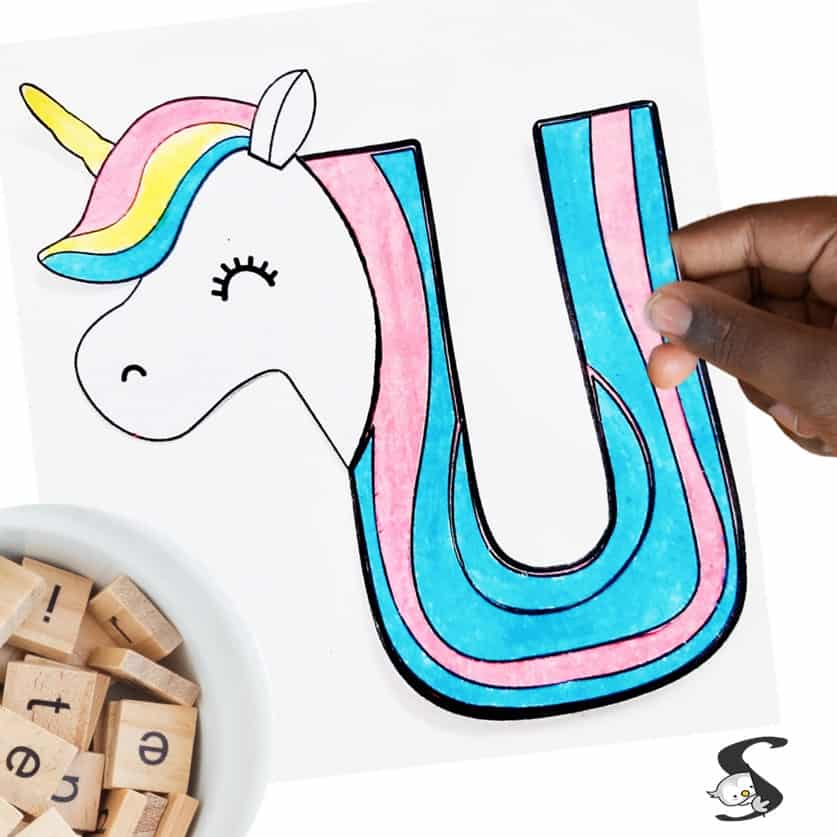
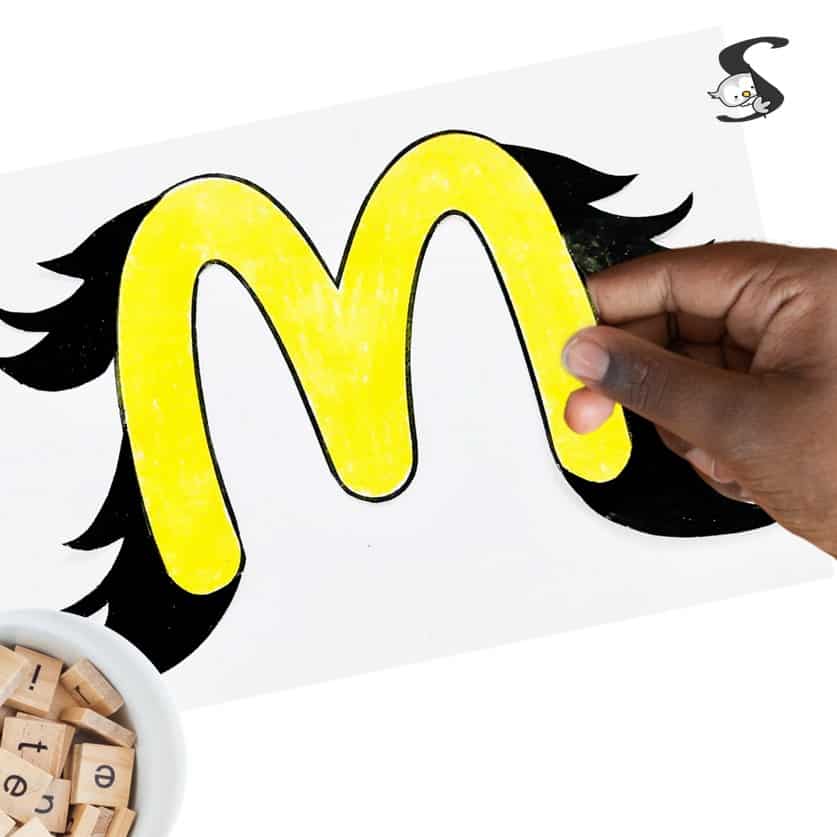
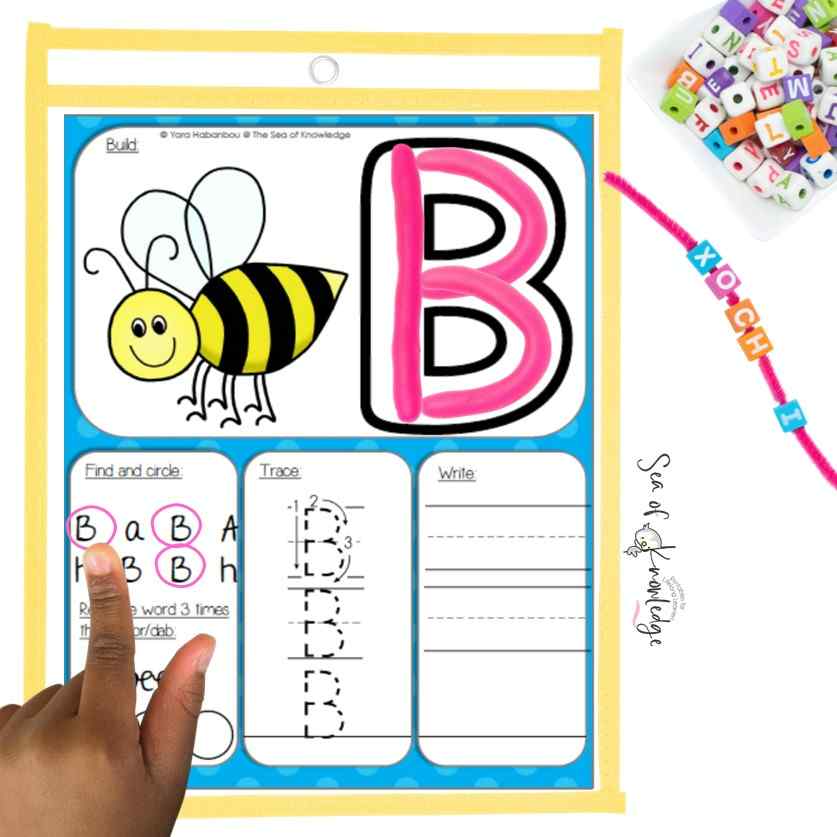
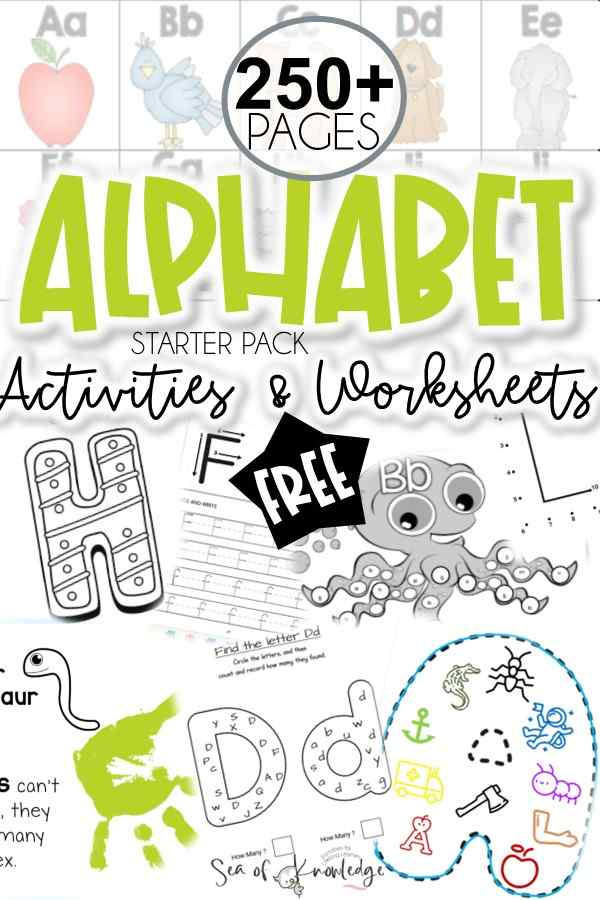

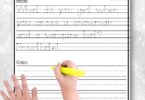
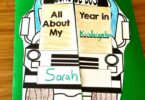
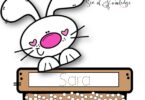
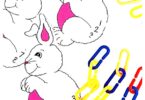
[…] How to teach the alphabet – Explore over 50 ways to teach the alphabet in a practical and fun way! Find out how you can help preschoolers and kindergarteners learn to recognize and write their letters with a free 250+ page alphabet mega pack. […]